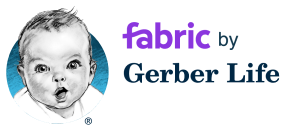Quick Introduction to Universal Life Insurance
Universal life insurance is a type of permanent life insurance that has an insurance component and a savings component. It has the potential to accumulate cash value over time that you can borrow from. You have the option to select flexible premiums and coverage amounts with universal life insurance. Your premiums will typically be higher with this insurance as compared to term life insurance because of the cash value component and because it lasts for your entire life.
Assuming you are a healthy, non-smoker looking for $250,000 of coverage, you can expect universal life insurance quotes near the following ranges:
| Age (yrs) | Male ($ per month) | Female ($ per month) | ||
| 25 - 35 | $63 - $103 | $54 - $83 | ||
| 35 - 45 | $103 - $150 | $83 - $130 | ||
| 45 - 55 | $150 - $244 | $130 - $207 | ||
| 55 - 65 | $244 - $427 | $207 - $337 |
Provider | Annual Payment | Monthly Payment |
| SelectQuote Life Insurance | ||||
 | $210 | $18 | ||
| New York Life Insurance – 10-Year Term | ||||
 | Starting at $104 | Starting at $9.80 | ||
| Fabric by Gerber Life – 10-Year Term Disclosure: Pricing shown is as of 7/10/2025 for a 10-year term (excludes NY) | ||||
 | $94.32 | $7.86 | ||
Universal Life Insurance Quotes: Choosing an Insurance Policy

Flexibility is the key asset of a universal life insurance policy (or “UL policy”). In fact, the main factor that makes universal life insurance different from whole life insurance is that it is flexible. Depending on your plan, you may be able to change the amount you pay in premiums for universal life insurance each year. One part of the premium is used to pay for the insurance portion of your plan. The other part of the premium goes toward a savings account which is invested. The rate of return for universal life insurance’s cash value is usually set by the market, but you may also have a minimum guaranteed interest rate.
Like whole life insurance, universal life insurance’s cash value component grows over time and you can borrow against it tax-free, while you’re still alive. Any interest that accrues is also tax-deferred. Because of this investment element, universal life insurance is typically viewed as a blend between insurance and a savings vehicle.
The interest earned in your universal life insurance policy is adjusted monthly rather than annually like on a whole life insurance policy. What this means is during periods of rising interest rates, the cash value of your universal life insurance policy could increase rapidly. You have the option to skip your monthly premium if the investment component reaps enough interest to cover your monthly premium amount.
Typically with universal life insurance, your premiums will be lower during periods of high interest rates than with whole life insurance, for the same amount of coverage.
You have more options in how your universal life insurance policy is set up than you do with whole life insurance. Some policies may allow you to increase or decrease the death benefit to match your particular circumstances at that time. As long as you pay your minimum premium, your universal life insurance policy will not lapse.
Universal Life Insurance Quote: Coverage Amounts
As you review universal life insurance quotes, you’ll need to figure out what choices within a universal life insurance policy are best for you and adjust those options accordingly. Unlike other types of life insurance, you don’t need to figure out the term of your policy. This insurance is for the duration of your life which is typically calculated at 121 years. At face value, universal life insurance coverage generally starts around $25,000. Typically the higher the coverage, the higher the premiums.
When choosing your death benefit coverage amount, you may select a fixed death benefit that doesn’t change and is equal to the amount of life insurance that you choose, or you may opt for a death benefit that grows based on the value in your savings account.
Depending on your needs and your policy, you may also be able to opt to add on term coverage for your family.
Getting a Universal Life Insurance Quote
Universal life insurance is one of the most popular life insurance policies available. If you’re looking at this type of life insurance, you’ll have many insurance companies to choose from, including some of the best insurance companies like TransAmerica, Prudential, MetLife and USAA for military members. Within a few minutes, you can have a personalized online quote.
Universal life insurance quotes sometimes tell you which rating class you fall into. Individuals who qualify for the best insurance rates will fall into the super preferred, select or preferred categories. If you fall into the standard plus or standard categories, you can expect to pay more for universal life insurance.
In order to receive an insurance quote, you’ll need to provide certain details about yourself. Be prepared to enter your state or zip code, date of birth, gender, height and weight. You’ll likely have to answer questions about your personal habits – such as tobacco use – and lifestyle.
One of the health questions may be if you have a history of heart disease, diabetes, glucose intolerance, cancer or depression. Other factors that could affect your universal life insurance quotes include your driving record, hobbies and occupation.
During the quote process, you may be asked what additional policy riders (or special features) you’d like to add to your policy. Several popular options include: enhanced disability benefit, accidental death benefit, living needs benefit or children level term rider.
Average Universal Life Insurance Quotes
Wondering how much universal life insurance will cost you? The cost of universal life insurance for a $500,000 policy can range widely from around $1,683 to $10,315, depending on your age when you buy the insurance.
If you purchase universal life insurance at a younger age, your premiums will be cheaper. On the lower end, a $500,000 universal life insurance policy would cost a 30-year-old male non-smoker $2,069 per year. However a 45-year-old male non-smoker can expect to pay around $3,648 per year on the lower end.
Smokers can expect to pay more than non-smokers for a universal life insurance policy. On the low end, a 30-year-old male smoker would spend $3,628 per year on premiums for a $500,000 policy and a 45-year-old male smoker would pay around $7,490 on the low end.
How to Choose the Best Coverage for You
If you’re looking at universal life insurance quotes, keep in mind that this insurance is meant to provide for your dependents in the event of your death. You may have been told to purchase enough insurance to cover about five to 10 times your annual salary, but many experts now say that advice is outdated. This may be too general a rule and it also does not take into account families in which one parent is a stay-at-home mom or dad.
In order to choose the best universal life insurance coverage for you, you may want to consider factors like your salary, your mortgage, funeral costs, as well as the size of your family.
A life insurance calculator can help you figure out how much coverage you need, and comparing quotes from different insurance companies can improve your chances of getting the best rates. Ideally, you’d be able to get a universal life insurance policy that adequately covers your beneficiaries for a low premium.
How to Pick a Life Insurance Company
When choosing a universal life insurance company to buy a policy from, it’s important to look at a company’s credit rating, how long they’ve been in business and consumer reviews.
If you’d like universal life insurance, but only need a policy up to $100,000, check out Ohio National Financial Services. Or if you need a policy that gives you the flexibility of multiple payment lengths, check out Northwestern Mutual.
Life Insurance Study: America's Healthiest Places
SmartAsset's interactive map highlights the healthiest counties across the country. Zoom between states and the national map to see data points for each region, or look specifically at one of the three factors driving our analysis: length of life, health behaviors and healthcare access.
1 Years of Potential Life Lost before the age of 75 per 100,000 residents
2 Primary Care Physicians per 100,000 residents
Methodology Our study aims to find the healthiest places in the country. An individual's health is key to assessing life expectancy, which is the ultimate determinant of the price one pays for life insurance. To find America's healthiest places we considered three factors: length of life, health behaviors and healthcare access.
The first factor we considered was the premature death rate in a county, specifically the years of potential life lost before age 75 per 100,000 residents. This number shows the rate at which people die before the age of 75. Places with the lowest rates of premature death generated the highest length of life index values.
Second, we created a health behaviors index for each county. This reflects the counties with the healthiest behaviors, as measured by three data points: the percentage of adults that are current smokers, the percentage of adults that are obese and the percentage of adults that report binge or heavy drinking. We indexed each of these data points on a scale of 0 to 100, took a weighted average, then indexed the final number to generate the health behaviors index.
Third, we considered access to healthcare as a secondary measure of how healthy each county is, given the impact this has on health outcomes. We looked at the rate of primary care physicians per 100,000 residents. We also looked at the uninsured rate, or the percentage of the population under age 65 without health insurance. We indexed each of these data points on a scale of 0 to 100, took a weighted average, then indexed the final number to generate the healthcare access index.
Finally, we used a weighted average of the three indices above to yield an overall healthiest places score. We used a 50% weighting for length of life, a 30% weighting for health behaviors and a 20% weighting for healthcare access. We indexed the final number so higher values reflect the healthiest places
Sources: County Health Rankings

